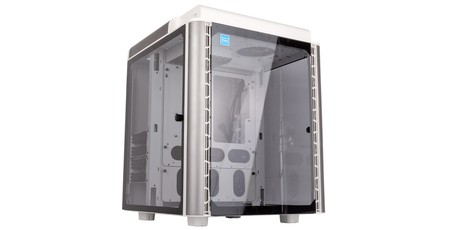
Performance Analysis
Testing the default air cooling performance in this sort of case is arguably redundant, but it does still help us get a sense of how good the design is from an airflow perspective.
In the case of the Level 20 HT, things are pretty good. Even though the 140mm fans are exhausting into solid glass, the bottom-to-top airflow arrangement (negative pressure will see air drawn in through the ventilated bottom panel even without fans there) still works well and delivers decent results whereby the CPU is about as cool as it would be on an open test bench, and the GPU, though a little warm, is also looked after.
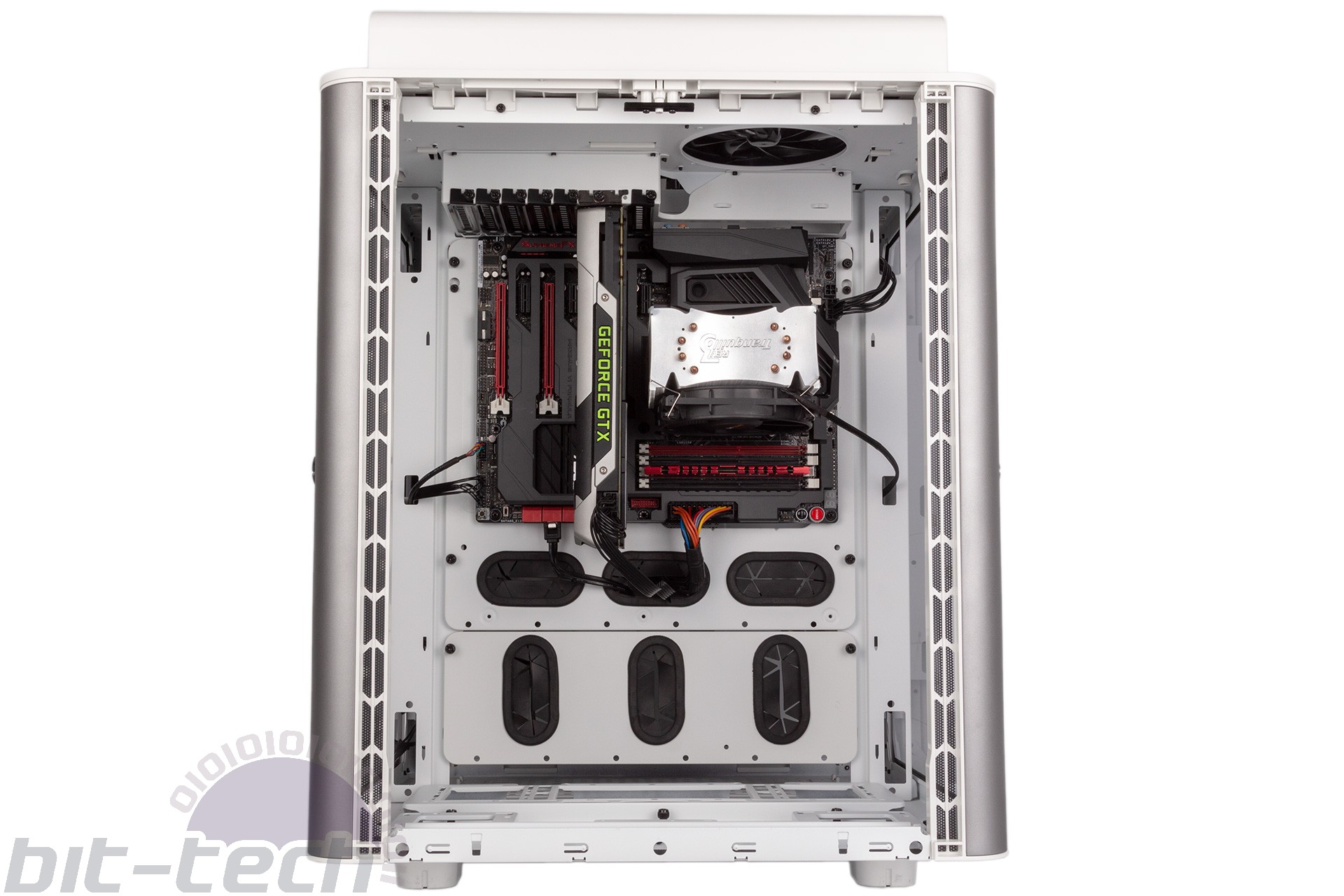
That’s not to say the roof isn’t a limiting factor – it absolutely is. Just by removing it, we were able to shed 7°C off the CPU delta T and 4°C off the GPU one – both significant, albeit not massively so.
Another positive is that the 140mm fans are both relatively quiet even at full speed, so most users will probably want to keep them in play.
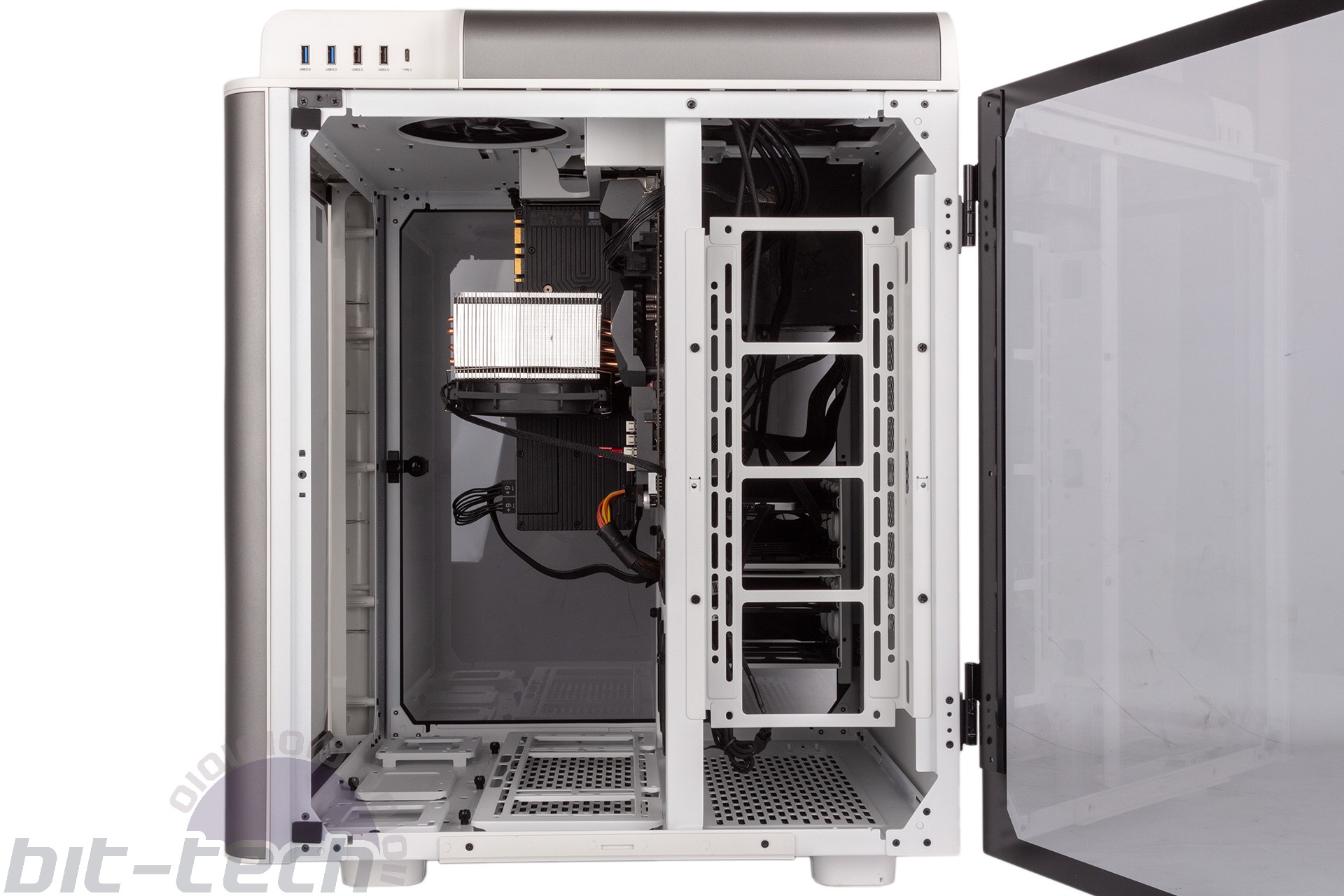
What this all means for those looking to water-cool is that the bottom radiator position is the optimal one and, if you go dual-loop, should be the one dedicated to the taming the most demanding components. We haven’t tested water-cooling results in this case, but we know from our recent water-cooling kit reviews that suffocating radiators like Thermaltake has done in the rear chamber is a good way to increase temperatures/noise, so this radiator should be as thick as possible and fitted with decent fans to make up for the case’s shortcomings.
Conclusion
As a pretty atypical case, the Level 20 HT warrants an atypical assessment. It’s not looking to compete with the more standard full-tower cases that it’s priced against; instead, it wants to provide a home that looks good from every angle when fitted with some meaty core components and one or two powerful water-cooling loops to match, and it’s only with this in mind that it can be fairly judged.
Sadly, we’re not convinced the Level 20 HT lives up to this promise. From a build quality perspective, the case doesn’t feel like it’s finished. The panel attachment mechanisms, heavy use of cheap-feeling plastic on the outside, and the fact our roof panel arrived unstuck mean the case feels overpriced from the get go. The absence of rails for the lower dust filters is irksome too, and other refinements on the inside are also lacking such as captive thumbscrews, rubber-padded pump mounts, and a more elaborate cable management solution.
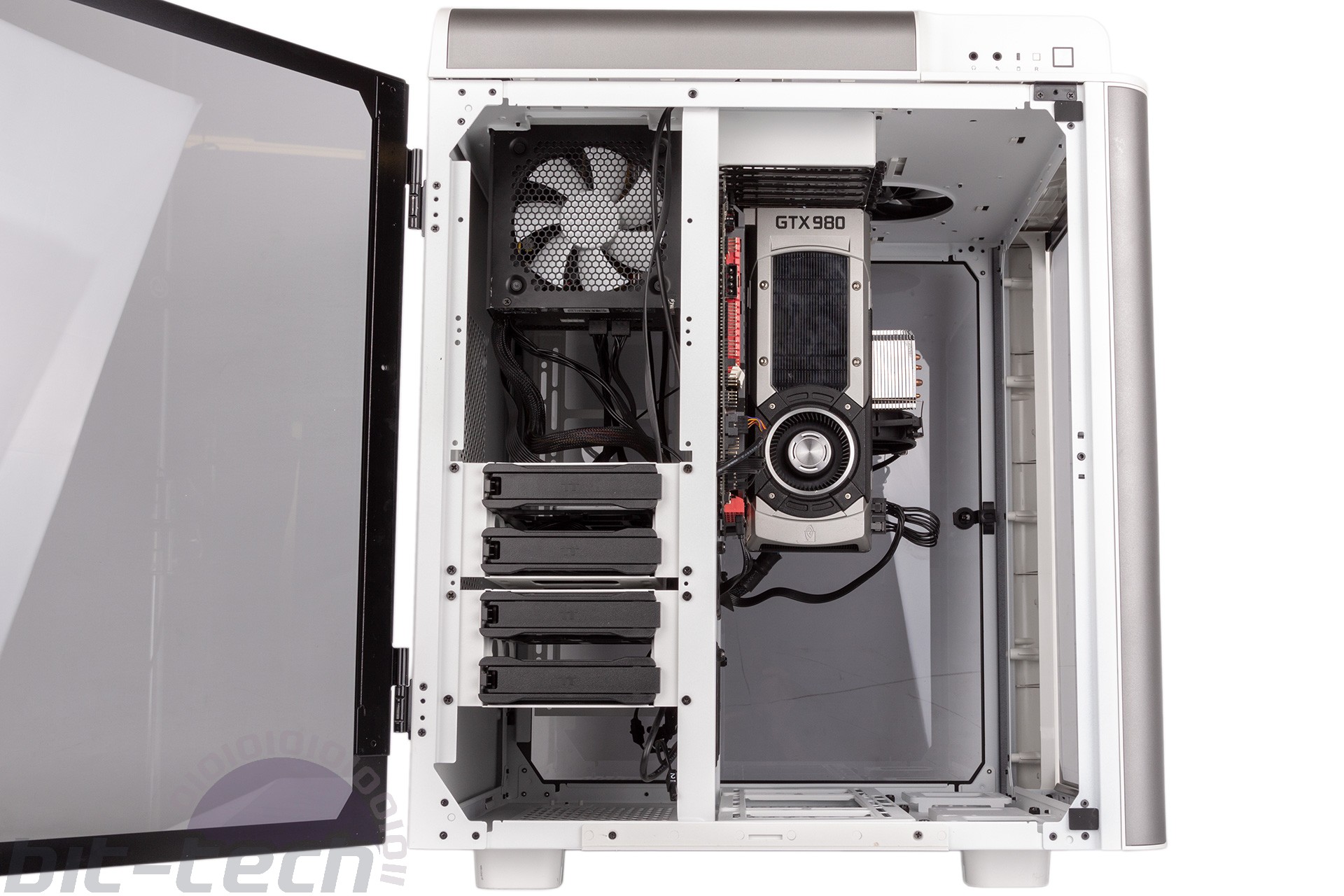
The level of hardware support is mostly good (e.g. dual water-cooling loops), but even there there are issues such as the placement of the rear radiator against glass, the inability to rotate a single GPU through 90 degrees, and the fact that so massive a case only has support for two radiators. That said, support for overly thick radiators mitigates this somewhat, at least from a cooling capacity standpoint.
It’s not all doom and gloom, of course. The highly modular interior and massive amounts of space mean installing components could hardly be easier. The USB connectivity is generous, and the airflow arrangement is surprisingly effective and complemented by full dust filter coverage. But these positives are not enough to outweigh the numerous negatives, none of which are disastrous individually but all of which, when combined, lead us to conclude that Thermaltake needs to take another stab at this design.
Ultimately, despite all our waffling, a review like this with a rational assessment of the case’s merits and drawbacks likely isn’t going to impact many buying decisions. If you happen to desire a massive case with dual loops visible from all sides, the Level 20 HT serves the niche, provided you’re willing to work with it and deal with the impracticalities – the size for one thing, plus the inability to access the primary I/O area without removing the clunky roof. However, for reasons we hope are now clear, it doesn’t do it as well as it could or should for £200.

MSI MPG Velox 100R Chassis Review
October 14 2021 | 15:04

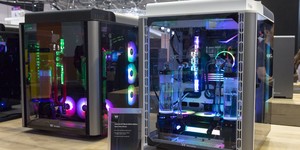






Want to comment? Please log in.